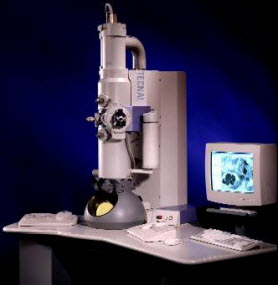
The thermal cycler (also known as a Thermocycler, PCR Machine or DNA Amplifier) is a laboratory apparatus used to amplify segments of DNA via the polymerase chain reaction (PCR) process. The device has a thermal block with holes where tubes holding the PCR reaction mixtures can be inserted. The cycler then raises and lowers the temperature of the block in discrete, pre-programmed steps. Quality thermal cyclers often contain silver blocks to achieve fast temperature changes and uniform temperature throughout the block. Other cyclers have multiple blocks with high heat capacity, each of which is kept at a constant temperature, and the reaction tubes are moved between them by means of an automated process.
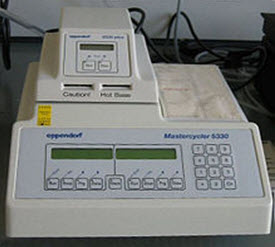
The Epoch Microplate Spectrophotometer is an innovative microplate reader with a high-powered xenon flash lamp, tunable monochromator and low UV capability. Epoch Microplate Spectrophotometer can read 6-, 12-, 24-, 48-, 96-, and 384-well microplates or can read low volume (2 µL) samples in the unique Take3 Plate. Powerful Gen5 Data Analysis Software provides for quick A260/A280 ratios, pathlength correction, protein analysis, basic ELISAs, and much more. The Epoch truly provides a high-value solution for unlimited applications.
Epoch's monochromator based UV-Vis wavelength selection offers expanded options for the life science laboratory without using interference filters, building in inherent cost savings. With its 200 nm to 999 nm wavelength range and 6- to 384- microplate reading capability, controlled with the Gen5 Data Analysis software interface, Epoch fills a void in today's laboratory through smart design and superior features. This robust, low maintenance microplate spectrophotometer ensures even greater value over time.
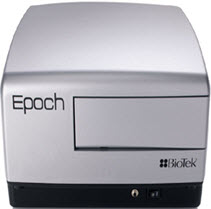
This equipment is ideal for high throughput screening applications like single strand polymorphism (SSP) analysis following PCR. This specialized unit allows you to rapidly load and run samples from a 96-well plate using a multi-channel pipette for fast, easy, and error free analysis. The 15 x 15cm fluorescently labeled running tray can accommodate up to 120 samples (96 samples + 24 markers) and resolve DNA strands from 50-1000 base pairs in as little as 30 minutes.

Designed to provide safe and easy operation for the separation of nucleic acids and proteins. This new unit provides a basic non cooled single gel system which can be used with any commercially available pre-cast gels. The system comes complete with a set of float glass plates with bonded spacers and sample comb. The TV50 single-plate 10 x 10cm (W x H) mini-gel unit is the ideal cost-effective option for routine, low throughput separation of proteins and nucleic acids in self-cast or commercially available precast gels.
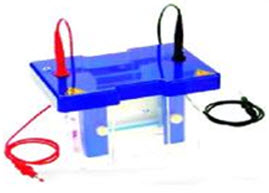
A fluorescence microscope is an optical microscope that uses fluorescence and phosphorescence instead of, or in addition to, reflection and absorption to study properties of organic or inorganic substances. A sample is illuminated with light of a wavelength which excites fluorescence in the sample. The fluoresced light, which is usually at a longer wavelength than the illumination, is then imaged through a microscope objective.
Two filters are normally used in this technique; an illumination (or excitation) filter which ensures the illumination is near monochromatic and at the correct wavelength, and a second emission (or barrier) filter which ensures none of the excitation light source reaches the detector. These functions may both be accomplished by a single dichroic filter. Fluorescence microscopy takes a fundamentally different approach to generating a light microscope image compared to transmitted or reflected white light techniques such as phase contrast and differential interference contrast microscopy. These two contrasting optical microscopy methods give very different but complementary data.
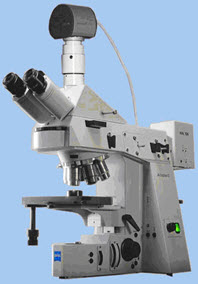
Phase contrast microscopy is an optical microscopy technique that converts phase shifts in light passing through a transparent specimen to brightness changes in the image. Phase shifts themselves are invisible, but become visible when shown as brightness variations.
Phase contrast microscopy is particularly important in biology, as it reveals many cellular structures that are not visible with a simpler bright field microscope. These structures were made visible to earlier microscopists by staining. This required additional preparation which killed the cells. The phase contrast microscopy made it possible for biologists to study living cells and how they proliferate through cell division.
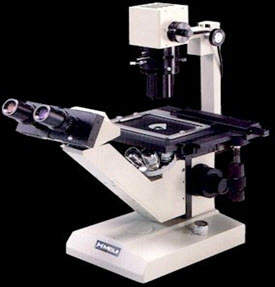
This instrument is used in the laboratory for accurate weighing of chemicals. This precision lab scale, with internal calibration, provides a much larger weighing chamber and smaller footprint than conventional balances. This lab scale is easy to use and calibrate, and adjust their settings based on environmental changes. Capacity: 120 g to 310 g. Resolution: 0.1 mg to 0.01 mg.

"Freeze-drying" (also known as lyophilisation, lyophilization or cryodesiccation) is a dehydration process typically used to preserve a perishable material or make the material more convenient for transport. Freeze-drying works by freezing the material and then reducing the surrounding pressure to allow the frozen water in the material to sublimate directly from the solid phase to the gas phase. If a freeze-dried substance is sealed to prevent the reabsorption of moisture, the substance may be stored at room temperature without refrigeration, and be protected against spoilage for many years. Preservation is possible because the greatly reduced water content inhibits the action of microorganisms and enzymes that would normally spoil or degrade the substance.
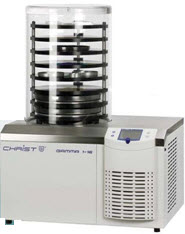
Vacuum filtration is a technique for separating a solid product from a solvent or liquid reaction mixture. The mixture of solid and liquid is poured through a filter paper in a Buchner funnel. The solid is trapped by the filter and the liquid is drawn through the funnel into the flask below, by a vacuum.
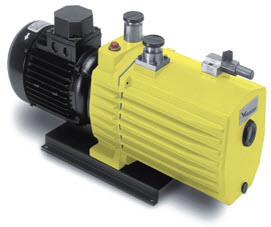
Microcentrifuges are usually used to spin microtubes (e.g. 1.5 / 2.0ml. 'Eppendorf', 0.5ml., 0.4ml. and 0.2ml. tubes), have fixed angle rotors and have variable speed up to around 15,000 rpm. (20,000 x g. depending on rotor). Rotors can accommodate up to 30 x 1.5 / 2.0ml. tubes with the most common being the 24 x 1.5 / 2.0ml. tubes rotor.
Refrigerated microcentrifuges have a cooling system with adjustable temperature in the range -10oC to +40oC and are usually run at 4oC
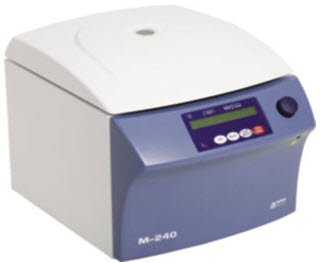
Benchtop centrifuges as the name implies are designed for use on a benchtop as opposed to ultra laboratory centrifuges which have to be floor standing. Some benchtop centrifuges are capable of fairly high speeds and rcf. as well as large total sample volumes
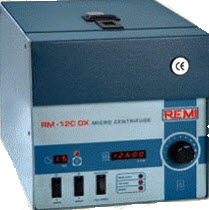
Refrigerated laboratory centrifuges use an internal cooling system (compressor, condenser, etc.) to maintain the centrifuge chamber and hence the samples being centrifuges at a pre-set below ambient temperature. Centrifugation in an unrefrigerated centrifuge usually causes samples to heat up to some extent and temperature sensitive samples could be affected, hence the use of a refrigerated centrifuge
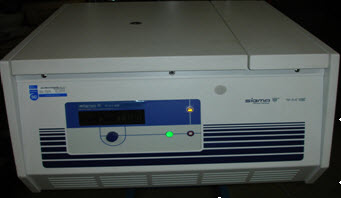
A BOD incubator is an incubator designed to maintain 20°C necessary to perform a test called Biochemical Oxygen Demand (BOD). It involves incubating samples saturated with oxygen at 20°C for (usually) five days. Such an incubator has a compressor to depress the temperature below ambient and a heater to bring it back up to 20°C. These work against each other and produce very precise temperature control, often as close as +/-0.1°C. The term "incubator" is a general term which includes BOD incubators and other incubators designed to maintain other temperatures. The term used unqualified usually refers to an incubator designed to maintain temperatures of 5°C or more above ambient to as high as 100°C. Incubators designed to maintain temperatures below ambient to as low as about 10°C are generally called low-temperature incubators. Devices that maintain colder temperatures are called refrigerators or freezers.
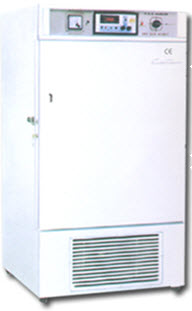
This is a device used to grow and maintain of course microbiological cultures or cell cultures. The incubator maintains optimal temperature, humidity and other conditions such as the carbon dioxide (CO2) and oxygen content of the atmosphere inside. Incubators are essential for a lot of experimental work in cell biology, microbiology and molecular biology and are used to culture both bacterial as well as eukaryotic cells.
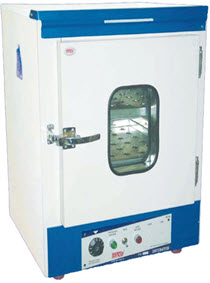
This Freezer with digital temperature controller system is used to preserve plasma, vaccines, micro organism and blood product storage, and other applications in the field of research, development, production and quality control.
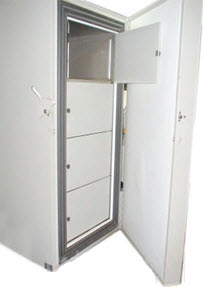
Temperature range from ambient temperature to 100°C. Thermostatic control with an accuracy of plus minus 0.5°C. Double walled inside stainless steel and outside mild steel sheet painted in epoxy powder coating. Bath consists two pilot lamp, temp. control knob and ON/OFF switch to work on 220/230 volts A. C. supplied with or without stirring arrangement without racks and thermometer. Lid of water bath is made of stainless steel 304 Qlty. A water bath is used to maintain a certain temperature. When a set of test tubes containing experimental materials have to be incubated at a certain temperature (typically between 37 and 60 degrees C) a water bath is used to accomplish the task
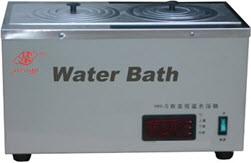
Biological safety cabinets (BSCs) are among the most effective primary containment devices used in laboratories working with infectious agents. They act as primary barriers to prevent the escape of biological aerosols into the laboratory environment. This is an important function, because most laboratory techniques (e.g., pipetting, vortexing, sonicating) are known to produce inadvertent aerosols that can be readily inhaled by the laboratory worker.High Efficiency Particulate Air (HEPA) filters are present in all classes of BSCs. A HEPA filter removes only particulates (including microorganisms), not vapors or gasses, from the air. Depending on its quality, a HEPA filter is able to trap 99.97% of particles equal to and greater than 0.3 micron.
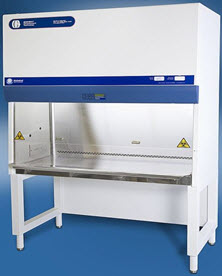
An autoclave is an instrument used to sterilize equipment and supplies by subjecting them to high pressure saturated steam at 121 °C for around 15–20 minutes depending on the size of the load and the contents. Autoclaves are widely used in microbiology, medicine, tattooing, body piercing, veterinary science, mycology, dentistry, chiropody and prosthetics fabrication. They vary in size and function depending on the media to be sterilized.
Typical loads include laboratory glassware, surgical instruments, medical waste, patient pair utensils, animal cage bedding, and lysogeny broth.[5]
A notable growing application of autoclaves is the pre-disposal treatment and sterilization of waste material, such as pathogenic hospital waste.
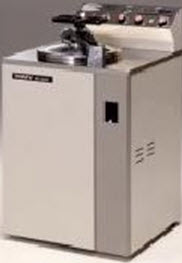
The Cryostat Microtome is used for cutting thin sectionsof fresh or frozen material and Cryotechniques suitable for Clincal & Research operation.
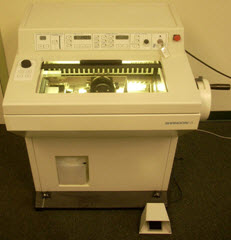
Lab shakers are still commonly used in many chemical and biological laboratories, even though the magnetic stirrer is preferred in certain situations. A laboratory shaker allows a number of samples to be stirred simultaneously under identical conditions, a feature that is not possible to replicate using multiple stirrer hotplates. Lab shakers consist of a broad table or platform which is oscillated by means of an electric motor. The samples are placed either in a beaker or Erlenmeyer flask on top of the platform which is clamped around the neck, or in test tubes or vials which can be nested into an appropriate holder. Lab shakers agitate samples either through a reciprocating linear motion, backwards and forwards, or through an orbital motion. In an orbital shaker, the platform moves in a circular motion of small diameter to create a vortex effect within the samples. The orbital motion provides a swirling action on the sample which is ideal for aeration, for example. A linear shaker is more aggressive, making it ideal for applications in which reagents must be thoroughly mixed, such as extractions.
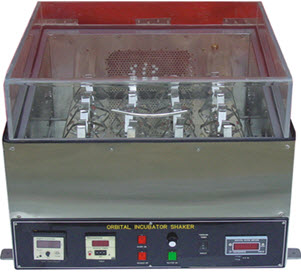
Rocker is made for those laboratories requiring a larger platform area and precise control over rocking parameters.
Both speed and degree of tilt are adjustable across a broad range to provide the exactlevel of agitation required for all types of samples.
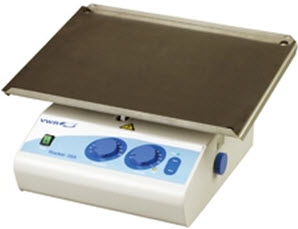
The hotplate/magnetic stirrer is a single device that can heat liquids and stir them with a magnetic stir bar. One knob controls the rate of stirring, and one knob controls heating. Magnetic stirrers are often used in chemistry and biology. They are preferred over gear-driven motorized stirrers because they are quieter, more efficient, and have no moving external parts to break or wear out (other than the simple bar magnet itself). Due to its small size, a stirring bar is more easily cleaned and sterilized than other stirring devices. They do not require lubricants which could contaminate the reaction vessel and the product. They can be used inside hermetically closed vessels or systems, without the need for complicated rotary seals.
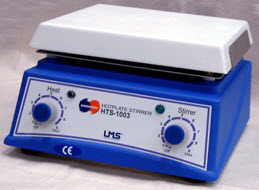
A vortex mixer is a simple device used commonly in laboratories to mix small vials of liquid. It consists of an electric motor with the drive shaft oriented vertically and attached to a cupped rubber piece mounted slightly off-center. As the motor runs the rubber piece oscillates rapidly in a circular motion. When a test tube or other appropriate container is pressed into the rubber cup (or touched to its edge) the motion is transmitted to the liquid inside and a vortex is created. Most vortex mixers have variable speed settings and can be set to run continuously, or to run only when downward pressure is applied to the rubber piece.
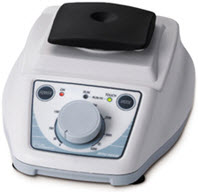
Hot air ovens are electrical devices used in sterilization. The oven uses dry heat to sterilize articles. Generally, they can be operated from 50 to 300 °C (122 to 572 °F) . There is a thermostat controlling the temperature. These are digitally controlled to maintain the temperature. Their double walled insulation keeps the heat in and conserves energy, the inner layer being a poor conductor and outer layer being metallic. There is also an air filled space in between to aid insulation. An air circulating fan helps in uniform distribution of the heat. These are fitted with the adjustable wire mesh plated trays or aluminium trays and may have an on/off rocker switch, as well as inThey do not require water and there is not much pressure build up within the oven, unlike an autoclave, making them safer to work with. This also makes them more suitable to be used in a laboratory environment. They are much smaller than autoclaves but can still be as effective. They can be more rapid than an autoclave and higher temperatures can be reached compared to other means.dicators and controls for temperature and holding time
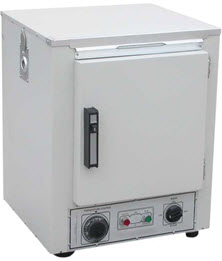
Vacuum Concentrators use a combination of centrifugal force, vacuum and heat to speed evaporation of multiple small samples. They offer maximum throughput required by biology, microbiology, biochemistry, pharmaceutical research and analytical chemistry laboratories.
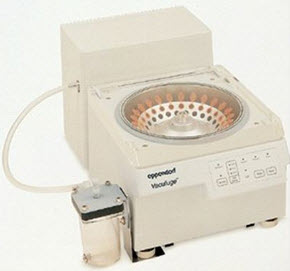
A pH meter is an electronic instrument used for measuring the pH (acidity or alkalinity) of a liquid (though special probes are sometimes used to measure the pH of semi-solid substances). A typical pH meter consists of a special measuring probe (a glass electrode) connected to an electronic meter that measures and displays the pH reading.The pH probe measures pH as the activity of the hydrogen cations surrounding a thin-walled glass bulb at its tip. The probe produces a small voltage (about 0.06 volt per pH unit) that is measured and displayed as pH units by the meter. For more information about pH probes, see glass electrode.
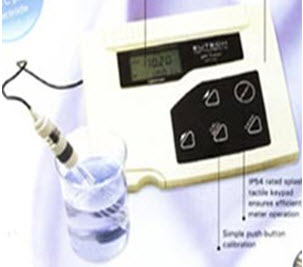
Transmission electron microscopy (TEM) is a microscopy technique whereby a beam of electrons is transmitted through an ultra thin specimen, interacting with the specimen as it passes through. An image is formed from the interaction of the electrons transmitted through the specimen; the image is magnified and focused onto an imaging device, such as a fluorescent screen, to be detected by a sensor such as a CCD camera. TEMs are capable of imaging at a significantly higher resolution than light microscopes, owing to the small de Broglie wavelength of electrons. This enables the instrument's user to examine fine detail—even as small as a single column of atoms, which is tens of thousands times smaller than the smallest resolvable object in a light microscope. TEM forms a major analysis method in a range of scientific fields, in both physical and biological sciences. TEMs find application in cancer research, virology, materials science as well as pollution, nanotechnology, and semiconductor research.
This institute is very unique in having Electron Microscope since 1977.This instrument was imported from Netherland and it is being widely used for screening samples received from various institutions in TamilNadu related to microbiological studies, nanotechnology as well as ultra structural studies of tissue samples.
